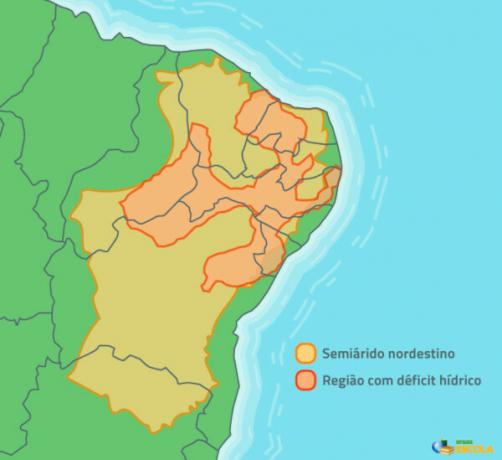Located in the central-eastern portion of the Northeast Region, Pernambuco has a territorial extension of 98,146,315 square kilometers and, according to the population count carried out in 2010 by the Brazilian Institute of Geography and Statistics (IBGE), it totals 8,796,448 population.
This federative unit has shown high economic development, a fact verified in the annual increase in the state's Gross Domestic Product (GDP). In 2008, the GDP of Pernambuco reached the mark of R$ 62.2 billion, corresponding to 2.3% of the Brazilian GDP; at the regional level, this participation was 17.9%, being the second largest, lower only in Bahia (31.5%).
Historically, Pernambuco had its main economic activity in agriculture, with sugarcane being the most prominent product. However, in the last three decades this scenario has totally changed, the services sector has become the fundamental element for generating revenue. The current composition of the state GDP is as follows:
Agriculture: 4.8%.
Industry: 21.9%.
Services: 73.3%.
State agriculture is based on the cultivation of sugar cane, but it is being replaced by rose, gladiolus and chrysanthemum plantations in Zona da Mata; and by irrigated fruit growing, especially in the Petrolina region, where grapes, mangoes, watermelon and bananas are produced. The state also produces beans, cassava, onions, corn and cotton.
Livestock, in turn, is composed of bovine herds (2,122,191 heads) and goats (1,685,845).
The industry has shown development due to the constant investments in the segments of transformation of minerals, clothing, chemical, petrochemical, pharmaceutical, furniture, transport and energy. Recife, capital of Pernambuco, has a modern IT hub, which concentrates more than 200 companies and carries out commercial businesses that reach more than 100 million reais a year.
The services sector, responsible for 73.3% of the state's GDP, is driven by tourism and trade. The state has 187 kilometers of fine sand beach and greenish water, with emphasis on Tamandaré and Porto de Galinhas. Another great tourist destination is the Fernando de Noronha archipelago, considered a heritage site. of humanity by the United Nations Educational, Scientific and Cultural Organization (UNESCO).
A negative factor of the activities developed in Pernambuco refers to the planting of marijuana. The marijuana polygon, as the Pernambuco region located on the border with Bahia and Alagoas is known, is one of the main marijuana cultivation sites in Brazil.
Exports and Imports of Pernambuco:
Exports:
Cane sugar: 26%.
Plastic, rubber and their products: 16%.
Mangoes and fresh grapes: 14%.
Electrical and electronic materials/appliances: 8%.
Fuels and lubricants for ships and aircraft: 6%.
Crustaceans: 4%.
Others: 26%.
Imports:
Products from chemical industries: 26%.
Petroleum derivatives: 17%.
Wheat and wheat flour: 7%.
Machines and equipment: 7%.
Food: 6%.
Mate: 6%.
Fertilizers and fertilizers: 4%.
Medical-hospital equipment: 3%.
Others: 24%.
By Wagner de Cerqueira and Francisco
Graduated in Geography
Brazil School Team
Pernambuco - Northeast region - geography of Brazil - Brazil School
Source: Brazil School - https://brasilescola.uol.com.br/brasil/a-economia-estado-pernambuco.htm

